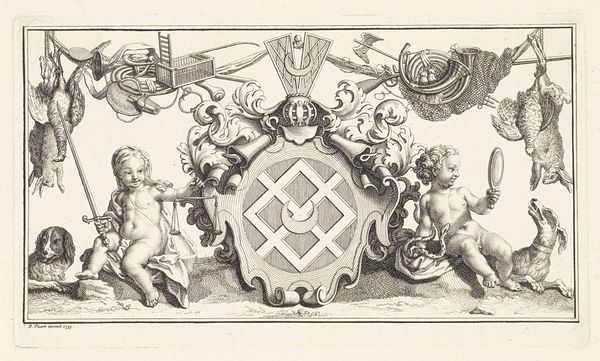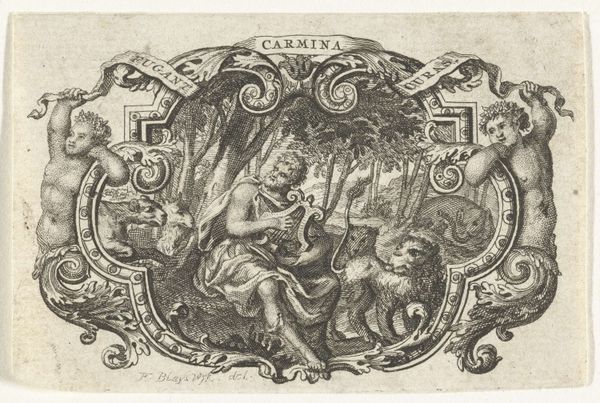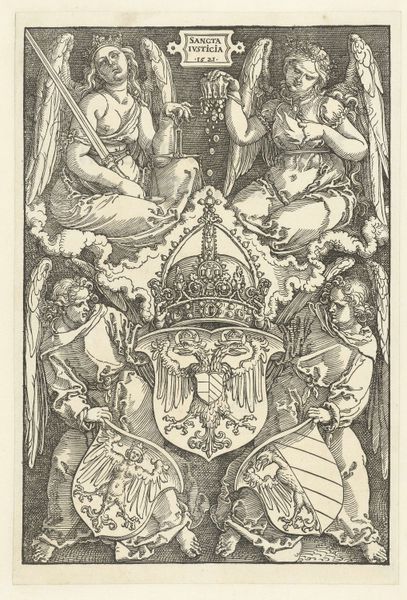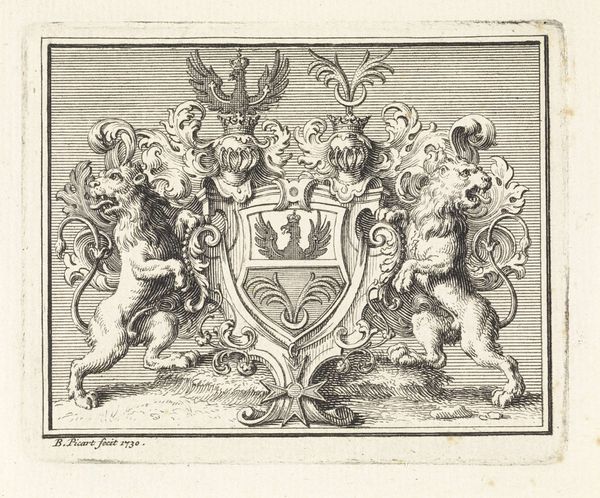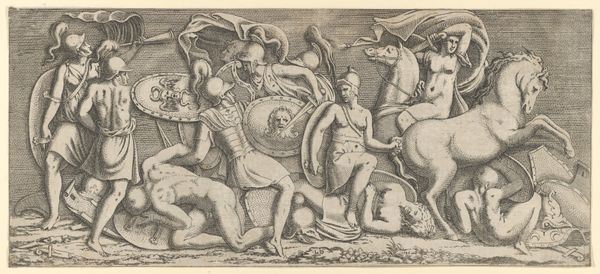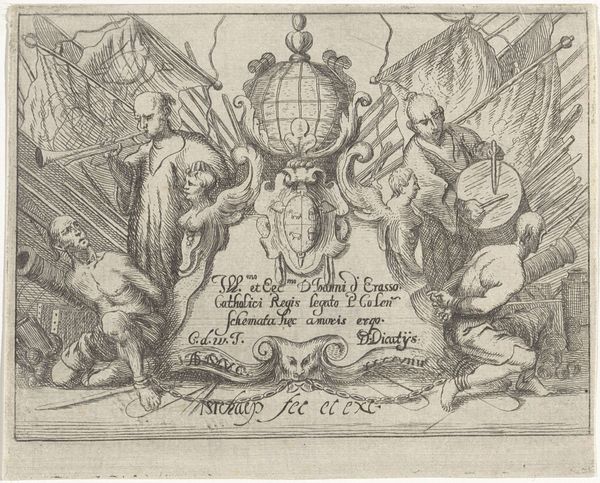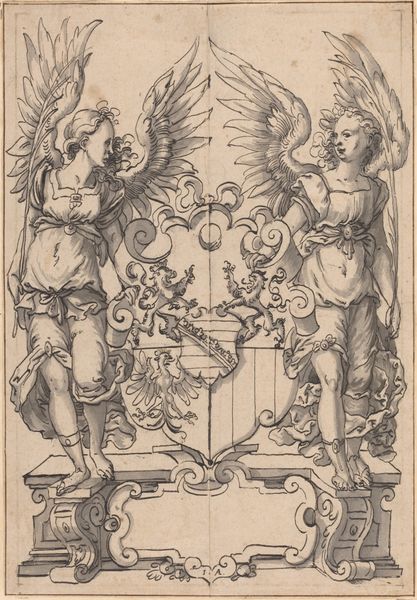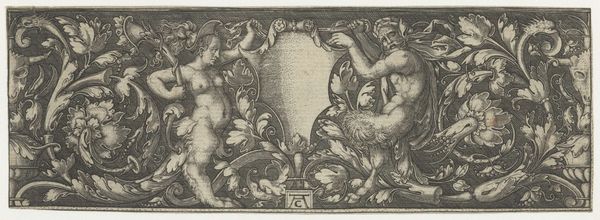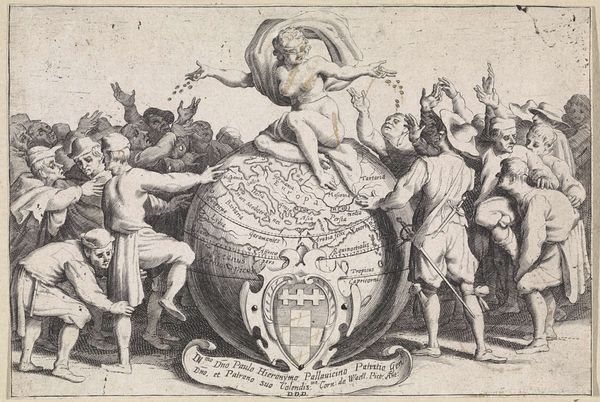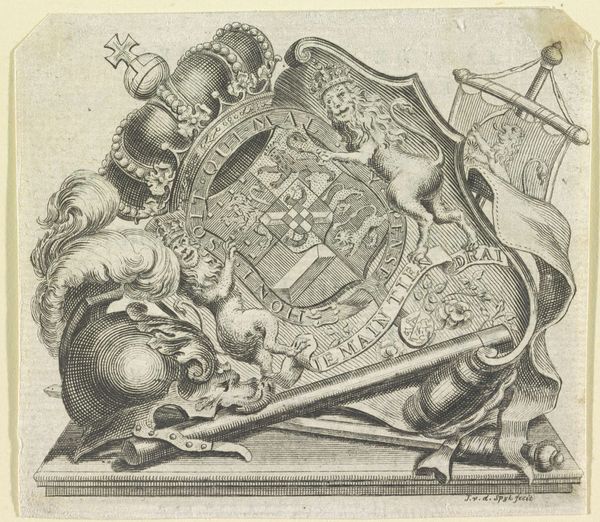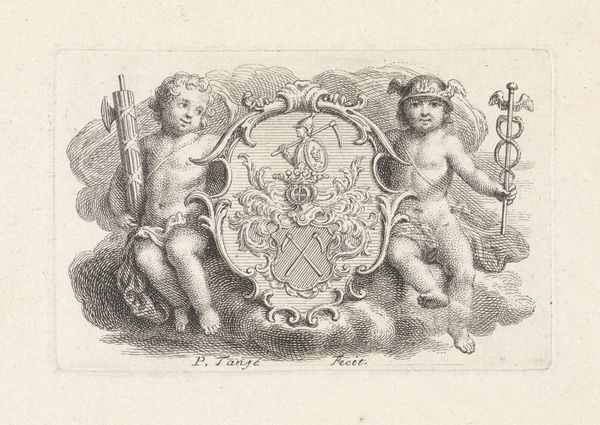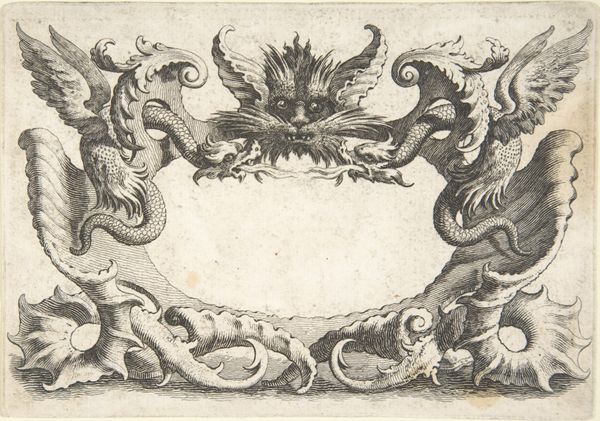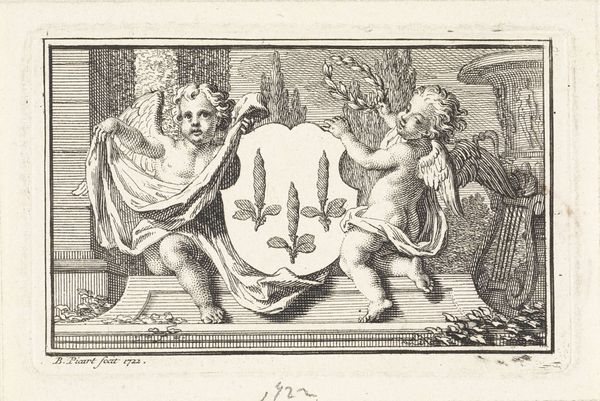
drawing, print, etching, engraving
#
portrait
#
drawing
#
ink drawing
#
allegory
# print
#
etching
#
figuration
#
11_renaissance
#
northern-renaissance
#
engraving
Dimensions: sheet: 3 1/16 x 4 5/8 in. (7.8 x 11.8 cm)
Copyright: Public Domain
Editor: This is "Coat of Arms with a Mask, Held by Two Genii" by Lucas van Leyden, created in 1527. It's an etching or engraving. The level of detail achieved with what appear to be only lines is incredible. How would you interpret the significance of these materials and the reproductive process here? Curator: Well, think about printmaking in the 16th century. It was a burgeoning industry, driven by accessibility and dissemination of information. Etchings and engravings like this democratized imagery, allowing wider consumption beyond the elite. Editor: So the choice of printmaking itself is a statement? Curator: Precisely. The labor involved, the crafting of the plate, the repetitive action of printing – it’s a means of production that challenges the singular "aura" of a painting. Also, the starkness of the ink on paper forces us to focus on line and form. The very absence of color emphasizes the constructed nature of the image. How might that inform your understanding of the figures depicted here? Editor: Interesting! So it’s not just about what's depicted – cherubs holding a mask – but also *how* it was made. Maybe the cherubs aren’t just mythological figures; they're representative of labor itself? Curator: Exactly! They're actively *holding* this coat of arms, demonstrating effort and agency. Consider the implications for patronage. How does a repeatable image alter the relationship between artist, patron, and audience, especially in relation to societal access and labor? Editor: I see. It recontextualizes the artwork from being only aesthetically valuable to being economically significant for artists to connect with audiences. Curator: Precisely. By looking at the material means, we unravel deeper layers of meaning about its social function in that period. Thank you. Editor: I never thought about an etching having so much to say about production and distribution. Thanks!
Comments
No comments
Be the first to comment and join the conversation on the ultimate creative platform.
